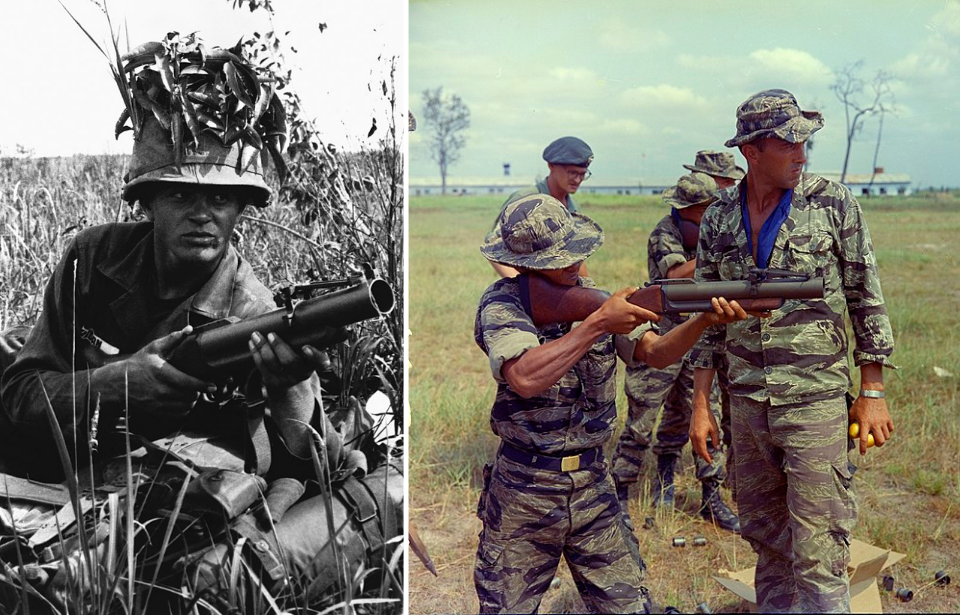Nicknamed the “Thumper-Gun,” “Bloop Tube,” and in Australia, the “Wombat Gun,” the M79 grenade launcher stood out for its break-action design and shotgun-like appearance. Troops praised it for its simplicity, dependable accuracy, and solid performance at medium range.
Yet the weapon’s greatest limitation was its single-shot capacity. After every round, the operator had to reload, leaving them vulnerable in the heat of combat. As modern warfare began demanding faster and more sustained fire, this flaw became increasingly significant. Eventually, the M79 was phased out in favor of newer, multi-shot systems that could be mounted beneath standard rifles—tools that offered soldiers the rapid response, adaptability, and protection the evolving battlefield required.
Project NIBLICK and the development of the M79 Grenade Launcher
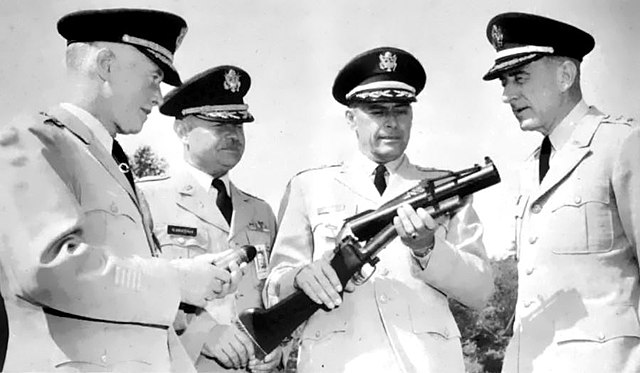
The M79 grenade launcher emerged from Project NIBLICK, a U.S. Army initiative aimed at arming infantry with a lightweight, accurate weapon capable of firing explosive rounds farther than traditional rifle grenades—yet easier to carry and operate than a mortar. Central to this goal was the development of a 40x46mm low-velocity grenade, designed to give individual soldiers greater precision at extended ranges.
Initial tests with multi-shot launchers proved unreliable, as early models suffered from frequent malfunctions. Seeking simplicity and dependability, the Army turned to a single-shot, break-action design created at Springfield Armory, known as the S-3. Though minimalistic, the launcher performed admirably, leading to iterative improvements that produced the S-5 and then the XM79. A three-shot prototype, the T148 grenade launcher, was also tested but quickly discarded due to persistent jamming issues.
With refinements to its sighting system and overall handling, the XM79 was officially standardized as the M79 on December 15, 1960. The result was a weapon that would become an enduring symbol of the Vietnam War—valued for its reliability, simplicity, and battlefield effectiveness.
The M79’s specs
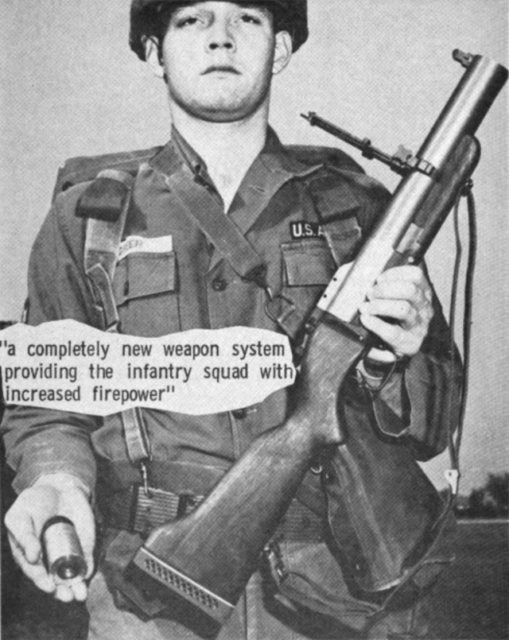
The M79 grenade launcher was manufactured in the United States from 1961 to 1971, with a total of 350,000 units produced. It featured a simple, rugged design made up of five main components: the receiver group; the fore-end assembly (which connected the barrel to the receiver); the barrel group; the sight assembly; and the stock, which was made from either wood or fiberglass. The weapon measured 73.1 centimeters in length, with a 36.83-centimeter barrel.
When unloaded, the M79 weighed 2.7 kilograms, and 2.93 kilograms when loaded. It was operated much like a shotgun, with the grenadier loading a round near the center of the weapon. The M79 used two sights: a fixed front blade and a foldable rear sight adjustable for distances between 75 and 375 meters.
A standout feature of the M79 was its “high-low” propulsion system, which helped reduce recoil while increasing effective range. It performed best at a distance of around 350 meters, with a maximum reach of 400 meters.
The M79 was capable of firing a wide range of 40 mm rounds, including anti-personnel, buckshot, illumination, flechette, and smoke. One of the most effective was the M406 high-explosive (HE) grenade, which traveled at 75 meters per second. While it didn’t carry enough kinetic energy to kill outright, it could cause serious injuries, including penetrating the abdomen and creating internal bleeding.
Two rounds were specifically developed for the M79. The first was the flechette round, which fired 45 small, 10-grain steel flechettes. However, it was ultimately ineffective because the darts often struck targets sideways and bounced off. The second was the M576 buckshot round, which released 24-grain metal pellets. It was extremely lethal at close range but lost much of its stopping power at greater distances.
Use of the M79 grenade launcher in Vietnam
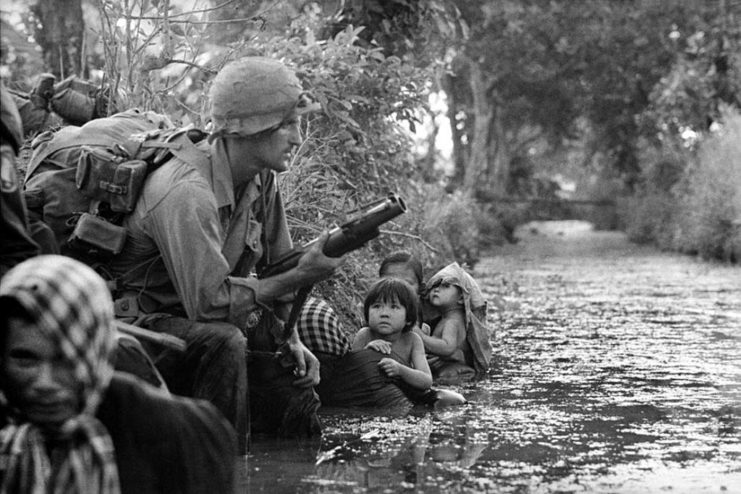
The U.S. Army first began using the M79 grenade launcher in 1961, and it quickly became an essential weapon in the Vietnam War. Soldiers valued it for being reliable, easy to operate, and packing serious firepower. The M79 was designed to bridge the gap between traditional hand grenades and mortars, earning the nickname “the platoon leader’s artillery.” In addition to its regular use, troops could also fire it indirectly by resting the buttstock on the ground and shooting it like a mortar.
The M79 was widely distributed among different combat units, including the 101st Airborne Division, the 1st Cavalry Division, the 173rd Airborne Brigade, and the 1st Infantry Division. It was issued to grenadiers in both Marine and Army rifle squads, where it proved especially effective in taking out Viet Cong bunkers.
The M79’s drawbacks
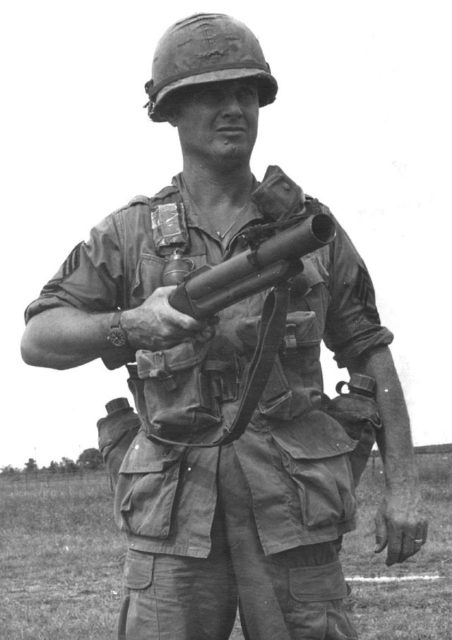
While favored by some US soldiers in Vietnam, the M79 grenade launcher had its drawbacks. It could only fire one round at a time, meaning its user needed to constantly reload the weapon. This made for a slow rate of fire, which was not conducive in a firefight. As such, the Navy developed the China Lake grenade launcher for its SEAL teams.
The second issue was the rounds needed to travel 40 meters to arm. While intended to be a safety feature, having such a distance between soldiers and the enemy wasn’t always possible. This meant most troops carried a secondary weapon, either a sidearm or an M16 rifle. However, it wasn’t always possible to carry the latter, given the M79’s large size.
Due to its drawbacks, the M79 was replaced by both the XM148 and the M203, which were underbarrel grenade launchers. While the XM148 was discontinued due to issues that plagued its design, the M203 was a success and became standardized. By the end of the war, it had replaced the M79. Although, the launcher was still in service with National Guard and Reserve units.
Use of the M79 grenade launcher following Vietnam
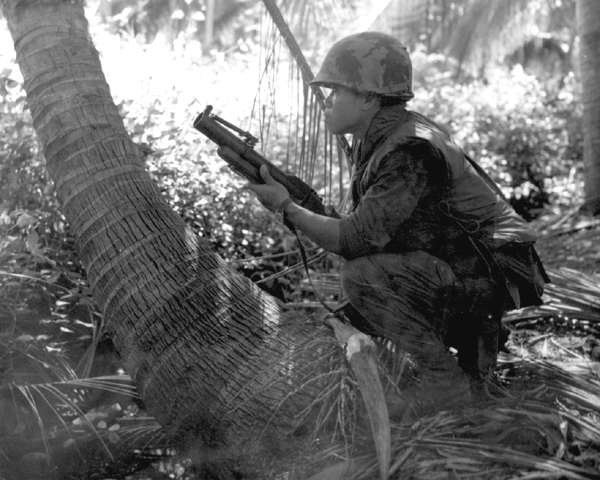
Aside from Vietnam, the M79 grenade launcher has been used in a number of conflicts, including the civil wars in Cambodia, Laos, Bougainville, and Syria; the Communist insurgency in Malaysia; the Falklands, Lebanese and Salvadoran wars; and clashes in Burma and along the border between Thailand and Cambodia.
It was also used during the wars in Iraq and Afghanistan. During Operation Iraqi Freedom, it was the go-to for clearing IEDs from a distance. It was also favored by Navy SEALS and Special Forces, as its range and accuracy is slightly better than the M203.
The M79 has also been used for non-lethal purposes in recent years, such as crowd control. Police forces use three rounds: the M1006 sponge grenade, the M651 CS gas round and the M1029 Crowd Dispersal round. The aim is to disperse large crowds before violence occurs, as opposed to stopping an enemy in their tracks.
